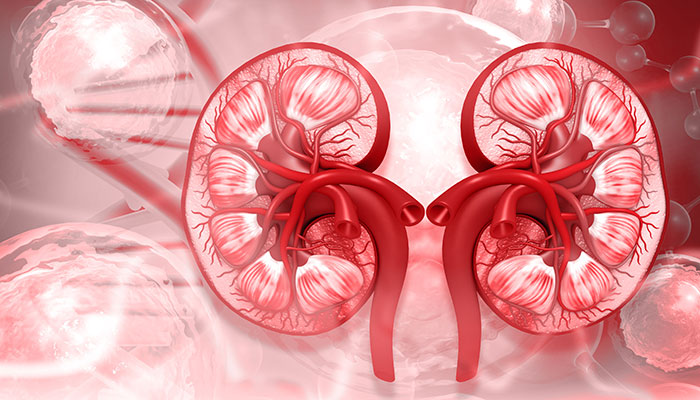
Chronic kidney disease (CKD) affects one out of seven Americans. It is among the top ten causes of death in the United States. At first, its symptoms are very subtle and it progresses slowly, getting worse over decades. People often don’t know they have CKD. By the time significant symptoms emerge, the kidneys have been greatly damaged. At this point, CKD cannot be reversed. If caught early, however, there are ways to slow its progression.
Who is at risk for CKD? A number of very common conditions can bring it on. These include diabetes, high blood pressure, heart disease, smoking, and obesity. Also, if your loved one has relatives who have (or had) CKD, there is a greater chance of their getting it. And people of African American descent are four times more likely to get it than are Caucasian Americans. People of Asian, Hispanic, and Native American descent are also at greater risk. If any of these apply to your relative, ask the doctor to do a yearly kidney screening. This is primarily a urine test and blood test. If they find evidence that the kidneys are having trouble, ask for a referral to a nephrologist (kidney specialist) who can order more in-depth tests.
What are the symptoms? The early signs are very general and easy to discount: Fatigue, nausea, loss of appetite, and general malaise. More-specific symptoms are foamy urine, breath that smells of ammonia, and kidney pain.
Treatments. If caught early enough, CKD progression can be slowed with a low-salt and low-protein diet, along with a variety of medications. Keeping blood pressure low and blood sugars in the recommended range will help. Also staying active, losing weight, and stopping smoking. It’s important to work with a dietitian and a nephrologist to learn which treatments make the most sense for your loved one.
This post is brought to you by Guardian Angel Hospice.
Might you or a loved one benefit from hospice care?
Check out our services
- Hospice in Kokomo and surrounding communities
- Hospice in Logansport and surrounding communities
- Hospice in Lafayette and surrounding communities
- Hospice in Lebanon and surrounding communities
- Hospice in Frankfort and surrounding communities
- Hospice in Carmel and surrounding communities
- Hospice in Indianapolis and surrounding communities

